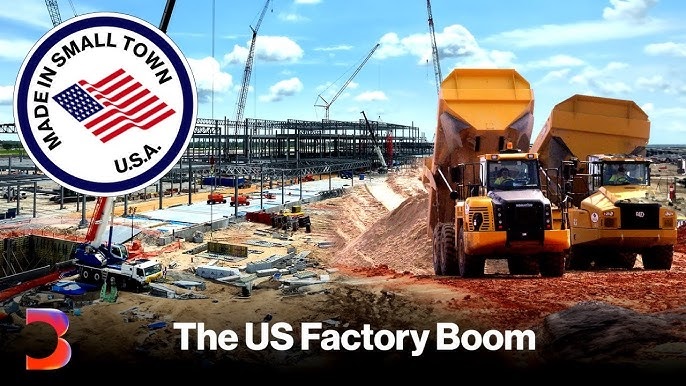
The COVID-19 pandemic triggered a significant transformation in the global manufacturing sector. In the early months of the pandemic, factories across the United States faced unprecedented disruptions, from supply chain interruptions to factory closures. However, as the world began to recover and vaccination rates increased, the U.S. manufacturing sector experienced a notable rebound. Dubbed the “factory boom,” this resurgence was characterized by increased production, investment in manufacturing technologies, and a renewed focus on domestic production.
Yet, as 2024 progresses, there are signs that America’s post-COVID factory boom is running out of steam, notes ‘The Wall Street Journal’.
Despite the initial surge, recent indicators suggest that the post-COVID factory boom is losing momentum. Several factors contribute to this slowdown:
- Supply Chain Disruptions
Although the worst of the pandemic-related supply chain disruptions have eased, the global supply chain remains fragile. Ongoing issues, such as semiconductor shortages, transportation bottlenecks, and raw material price fluctuations, continue to impact manufacturing operations. These disruptions contribute to production delays and increased costs, undermining the sector’s growth momentum.
- Rising Inflation
Inflationary pressures have been a significant concern for the manufacturing sector. Rising costs of raw materials, energy, and labor have squeezed profit margins for many manufacturers. As prices for inputs increase, companies face the challenge of balancing cost pressures while maintaining competitive pricing for their products.
- Labor Market Challenges
The manufacturing sector is grappling with labor market challenges, including a shortage of skilled workers. The pandemic accelerated retirements and career changes, exacerbating pre-existing labor shortages. Additionally, wages have risen as companies compete to attract and retain talent, further straining profitability.
- Changing Consumer Behavior
Consumer behavior is evolving as pandemic-related spending patterns stabilize. The initial surge in demand for certain goods has moderated, leading to a more subdued growth trajectory for some manufacturing sectors. Companies that benefitted from pandemic-driven demand are now facing a normalization of sales, impacting their production levels.
- Geopolitical Tensions
Geopolitical tensions and trade uncertainties continue to pose risks to the manufacturing sector. Tariffs, trade restrictions, and political instability can affect global supply chains and market access. Companies with significant international operations or dependencies on foreign suppliers are particularly vulnerable to these disruptions.
The slowdown in America’s post-COVID factory boom has broader implications for the U.S. economy:
- Economic Growth
Manufacturing is a key driver of economic growth, contributing to job creation, investment, and innovation. A deceleration in the manufacturing sector could lead to slower overall economic growth, affecting other industries and economic indicators.
- Job Market
The manufacturing sector has historically been a significant source of employment. A slowdown in manufacturing could impact job creation and exacerbate existing labor market challenges. Regions that are heavily reliant on manufacturing jobs may experience economic hardship if the sector continues to underperform.
- Investment Trends
The pace of investment in manufacturing technologies and infrastructure may slow if the sector faces prolonged challenges. This could affect the long-term competitiveness of U.S. manufacturing and its ability to adapt to future technological advancements.
read more in our Telegram-channel https://t.me/The_International_Affairs

 11:01 08.08.2024 •
11:01 08.08.2024 •






















